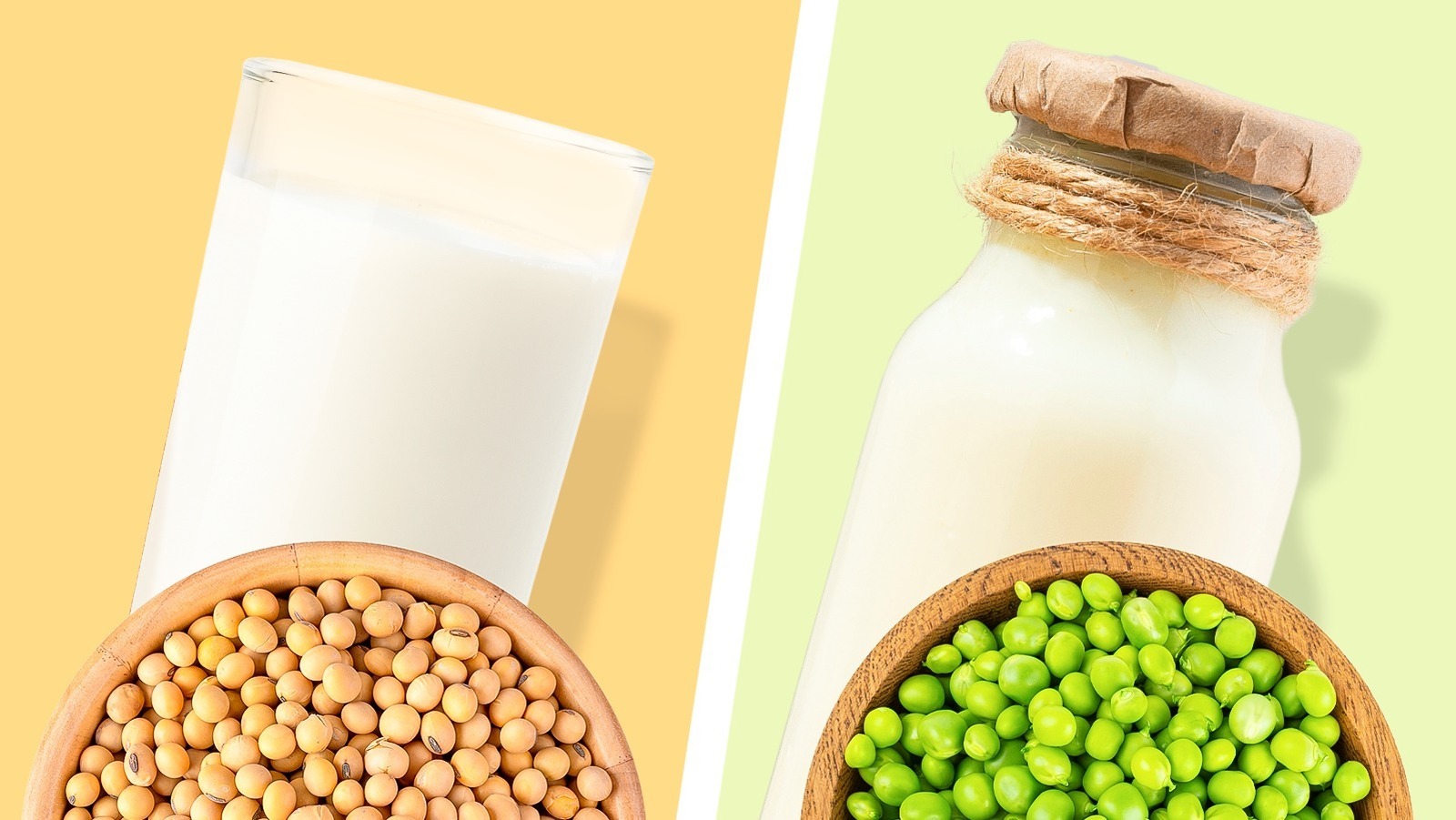
"We may receive a commission on purchases made from links. Once upon a time, your choice of milk would have been cow milk or nothing. Then, you would have had a choice between dairy and soy milk. Now that you're fortunate enough to live in a time with so many different types of plant-based milk, your biggest concern is probably how to choose between them all. With pea milk gaining steady popularity, how does it compare to soy?"
"Soy milk has been readily available for decades now, so you might think you know a fair bit about it. Pea milk, on the other hand, is a relative newcomer to the mylk aisle. Both soy and pea milk are made from legumes - soybeans and yellow peas, respectively - and both are suitable for vegans, individuals with lactose intolerance, and those with nut allergies. Both are designed to be one-to-one plant-based replacements for dairy milk in coffee, cooking, and drinking."
Soy milk originated in ancient China about 2,000 years ago and became mass-produced in the U.S. by the 1930s. Soy milk is made by soaking, hulling, blending, and straining soybeans to extract a milk-like beverage. Pea milk is produced from yellow peas and is a newer entrant to plant-milk options. Both soy and pea milks are legume-derived, suitable for vegans, people with lactose intolerance, and those with nut allergies, and serve as one-to-one replacements for dairy in coffee, cooking, and drinking. Commercial pea milk often requires additional processing and ingredients to mimic dairy taste and texture. Pea milk typically has a lower environmental footprint than soy.
Read at Tasting Table
Unable to calculate read time
Collection
[
|
...
]